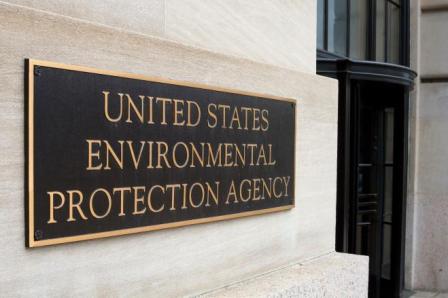EPA's Role in Radiation Protection
 In 1970, Congress gave EPA the responsibility for establishing generally applicable standards for the protection of human health and the environment from radioactive materials. EPA standards set protective limits on the radioactivity
In 1970, Congress gave EPA the responsibility for establishing generally applicable standards for the protection of human health and the environment from radioactive materials. EPA standards set protective limits on the radioactivity![]() radioactivityThe emission of ionizing radiation released by a source in a given time period. The units used to measure radioactivity are curie (Ci) and becquerel (Bq). in soil, water and air that comes from human use of radioactive elements such as uranium. These radioactive elements emit ionizing radiation
radioactivityThe emission of ionizing radiation released by a source in a given time period. The units used to measure radioactivity are curie (Ci) and becquerel (Bq). in soil, water and air that comes from human use of radioactive elements such as uranium. These radioactive elements emit ionizing radiation![]() ionizing radiationRadiation with so much energy it can knock electrons out of atoms. Ionizing radiation can affect the atoms in living things, so it poses a health risk by damaging tissue and DNA in genes., which can damage living tissue and cause cancer. Learn the radiation basics. EPA does not regulate the non-ionizing radiation
ionizing radiationRadiation with so much energy it can knock electrons out of atoms. Ionizing radiation can affect the atoms in living things, so it poses a health risk by damaging tissue and DNA in genes., which can damage living tissue and cause cancer. Learn the radiation basics. EPA does not regulate the non-ionizing radiation![]() non-ionizing radiationRadiation that has enough energy to move atoms or cause them to vibrate, but not enough to remove electrons. Examples of this kind of radiation are radio waves, visible light and microwaves. that is emitted by electrical devices such as cell phones. See: Radiation Information from Other Agencies.
non-ionizing radiationRadiation that has enough energy to move atoms or cause them to vibrate, but not enough to remove electrons. Examples of this kind of radiation are radio waves, visible light and microwaves. that is emitted by electrical devices such as cell phones. See: Radiation Information from Other Agencies.
In addition to setting legally enforceable standards, EPA issues federal guidance documents with recommendations on radiation protection. EPA develops technical reports to help standardize methods for dose and risk assessment. Federal guidance recommendations and technical reports are used by federal and state agencies in developing radiation protection regulations and standards. EPA also helps state and local responders respond to radiological emergencies.
EPA develops science-based guidance for cleaning up sites that are contaminated with radioactive materials, including Superfund Program sites. The Agency works cooperatively with other federal agencies to ensure that consistent site investigation and laboratory methods are used throughout the federal government.
View EPA Radiation Regulations and Laws.
Learn about EPA's Federal Guidance for Radiation Protection.
